
Welcome to Windermere Union Church
At Windermere Union Church, worship is where the ancient meets the future. Our services blend the depth of timeless traditions with the energy and creativity of contemporary expression. You’ll find meaningful liturgy alongside modern music, thoughtful preaching, and a community where faith is alive and growing.
Our atmosphere is casual—come as you are. What matters most is that you feel welcomed, embraced, and free to be yourself. As an Open and Affirming congregation, we celebrate diversity and fully affirm our LGBTQ+ siblings in Christ. Whoever you are, and wherever you are on life’s journey, you are welcome here.
Join us this Sunday and experience our tagline come to life:
Provoking Thought. Inspiring Spirit. Accepting All.
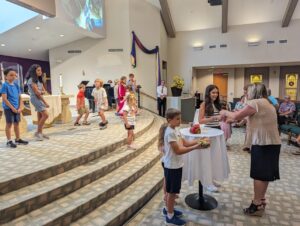
Children Serve Communion
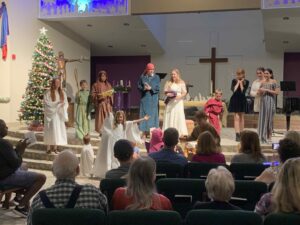
Christmas Pageant
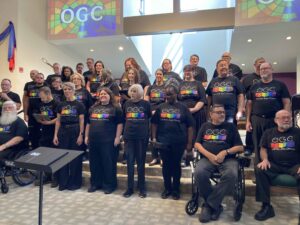
Orlando Gay Chorus
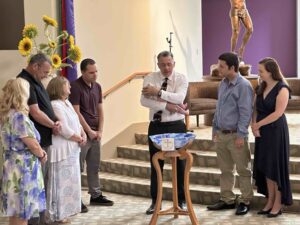
Baptism
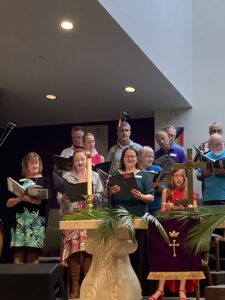
Choir
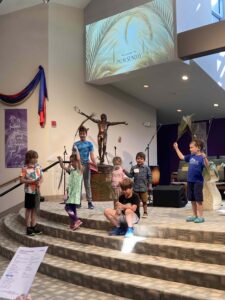
Children lead worship
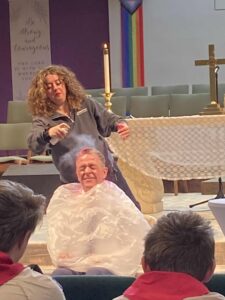
Pastor gets blue hair
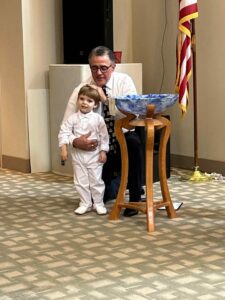
Baptism
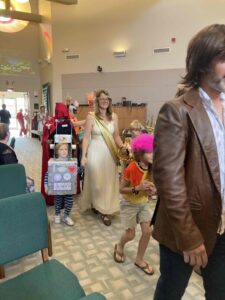
Costum Parade
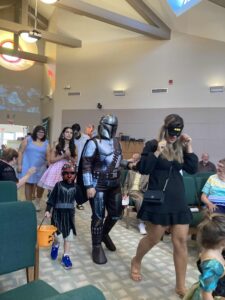
Costum Parade
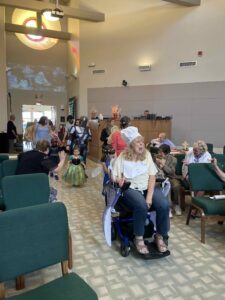
Costum Parade
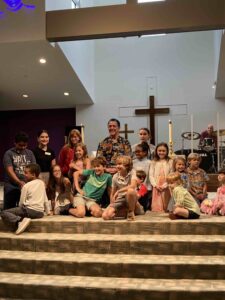
Pastor Blue Hair with Kids
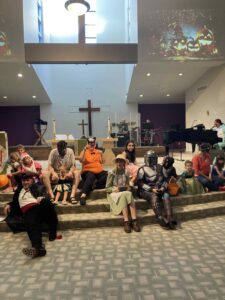
Halloween Worship
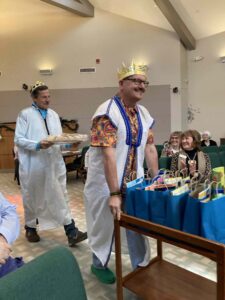
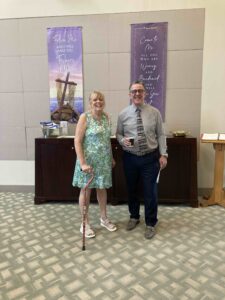
Pastor Brad & Miss Chris
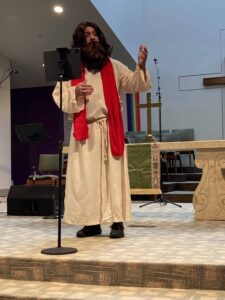
Jesus Preaching
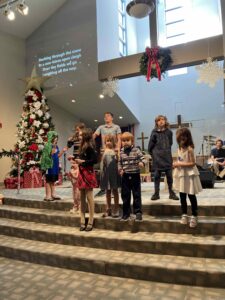
Children at Christmas
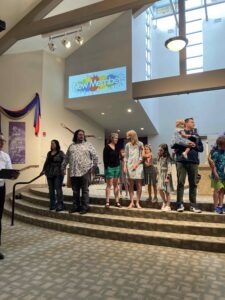
New Members Sunday
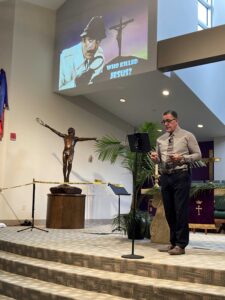
Uncovering who killed Jesus
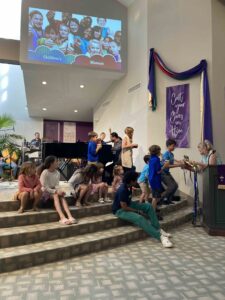
Children's time with Miss Chris
Jesus as a Refugee: A Devotional Reflection
Introduction: A Child on the Run
The image of Jesus as a newborn often brings warm and tender thoughts to mind. We picture him swaddled in cloth, lying peacefully in a manger while shepherds and angels sing songs of glory. But the Gospel of Matthew does not leave the nativity scene in quiet serenity. Instead, it jolts us into the harsh reality of violence, displacement, and fear. For soon after his birth, Jesus and his family become refugees, fleeing their homeland under the threat of political persecution.
This is a startling truth: the Savior of the world began his earthly life not in safety but in flight. He was hunted, vulnerable, and dependent on the compassion of strangers in a foreign land.
The Flight into Egypt
Matthew 2:13–15 tells the story plainly. After the Magi depart, Joseph is warned in a dream to take Mary and the infant Jesus to Egypt because King Herod is searching for the child to destroy him. In the middle of the night, they gather their few belongings and escape into a land not their own.
This passage deliberately echoes the Hebrew Scriptures. Just as the Israelites once sought refuge in Egypt during famine (Genesis 46), so now the infant Messiah finds shelter there. And just as Moses was preserved from Pharaoh’s slaughter of the Hebrew infants, Jesus is spared from Herod’s massacre in Bethlehem. Matthew frames the story so that readers understand Jesus as a new Moses—one who will lead God’s people into a new exodus of freedom.
Historical Questions: Did This Really Happen?
Biblical scholars raise important questions about this story. Did Herod really massacre infants in Bethlehem? Did Joseph, Mary, and Jesus actually flee to Egypt?
We know from history that Herod the Great was capable of great cruelty. He executed his own wife and sons when he suspected them of plotting against him. While there is no direct record outside the Gospels of Herod’s slaughter of Bethlehem’s children, it is consistent with his character. Bethlehem, at that time, was a small village—so the number of children killed may have been fewer than a dozen, not large enough to warrant attention from other ancient historians.
Another question arises with the dating. Some scholars note that Herod died in 4 BCE, which complicates the traditional dating of Jesus’ birth at “year zero.” If Herod was already dead, how could Jesus be hunted by him? The most likely explanation is that Jesus was actually born earlier than our calendar suggests—perhaps around 6 or 7 BCE. Our system of counting years, established centuries later, was simply off by a few years.
These details remind us: the story of Jesus’ childhood is not myth floating outside of time. It is rooted in the messy, complicated realities of history.
Bethlehem or Nazareth?
Another layer of complexity comes with Jesus’ birthplace. Luke says he was born in Bethlehem because of a census that brought Joseph and Mary there. Matthew also places the birth in Bethlehem but later presents Nazareth as their home. Scholars debate whether Jesus was in fact born in Nazareth and the Bethlehem story was a theological way of connecting him to King David’s lineage.
Why would Matthew emphasize Bethlehem? Because it tied Jesus to prophecy. Micah 5:2 had long promised that a ruler would come from Bethlehem, the city of David. By framing Jesus’ birth there, Matthew anchors him in the story of Israel’s hope.
So was it Bethlehem? Or Nazareth? Historically, Nazareth seems more likely, but devotionally both towns speak truth: Jesus is the long-awaited Messiah from the house of David, and he is also the humble carpenter’s son from a backwater town.
The Refugee Christ
Whatever the exact details, Matthew’s central claim is clear: Jesus began his life as a refugee. His family was forced to flee from danger, cross borders, and seek safety in a foreign land. He was born into poverty, and before he could speak his first words, he knew the pain of displacement.
This is more than historical curiosity. It is theological proclamation. God entered our world not with privilege but with vulnerability. God chose to experience the terror of flight, the uncertainty of exile, the longing for home. In Jesus, God stands in solidarity with every refugee, asylum seeker, and immigrant.
A Devotional Connection: Jesus and Today’s Refugees
When we hear the story of Jesus’ flight into Egypt, we cannot help but think of the millions who are displaced today. Families in Central America leaving violence. Children in Syria crossing deserts. Mothers and fathers at the U.S.–Mexico border, clutching their babies, hoping only for safety.
Regardless of our political stance on immigration policy, the human reality is the same: these are people made in the image of God, longing for refuge. And when we look at them, we are invited to see the face of Jesus.
Jesus was a child who needed shelter. He was a baby carried across borders. He was an immigrant, a refugee, a stranger in a strange land.
Matthew’s Echo of Moses
Matthew makes this parallel explicit. Herod, like Pharaoh, seeks to destroy infants. Jesus, like Moses, escapes. Both go to Egypt. Both later emerge to lead God’s people into new life.
This comparison matters for us today. The story of Moses reminds us that God hears the cry of the oppressed. The story of Jesus reminds us that God not only hears but enters into that suffering. Refugees are not only on God’s heart—they reveal God’s own story.
A Theological Reflection
What does it mean for us as people of faith?
It means we cannot think of immigration issues only as matters of politics, policy, or economics. For Christians, they are also matters of theology, of discipleship, of seeing Christ in the stranger.
It does not mean we all have to agree on solutions. But it does mean we are called to compassion. To love. To welcome. To remember that the Holy Family once depended on the kindness of others when they were far from home.
Jesus’ Invitation to Us
When Jesus grows up, he says plainly: “I was a stranger and you welcomed me” (Matthew 25:35). Perhaps he remembered his own story as a refugee child when he spoke those words. Perhaps he knew in his bones what it meant to be without a home.
Our faith calls us to embody that same love. To welcome, to show kindness, to see Christ in those who come seeking safety.
Conclusion: A Devotional Prayer
The story of Jesus as a refugee is not only history. It is devotion. It is invitation. It is a reminder that God draws close to those who wander, those who flee, those who seek home.
As we reflect on Jesus’ childhood journey, may we open our hearts wider. May we see him in the refugee child today. May we pray not only for peace but also for courage to be people of welcome.
Israel’s Immigration into Egypt: A Devotional Reflection
Introduction: A Family on the Move
Immigration is woven into the fabric of Scripture. Long before Israel became a nation, it was a family—Jacob, his sons, and their children. And like so many families throughout history, their story included famine, hunger, and the difficult decision to leave home behind.
Genesis tells us that Jacob’s family went down into Egypt not as conquerors but as migrants, as desperate people looking for food. What began as a journey of survival would eventually become the defining backdrop of Israel’s identity. For centuries, they would remember that they were once strangers in a foreign land.
The Story in Scripture
The book of Genesis traces the story. Joseph, betrayed by his brothers and sold into slavery, is taken to Egypt. Through years of hardship and God’s providence, he rises to power and becomes Pharaoh’s right hand. When famine strikes the land of Canaan, Joseph’s brothers come seeking grain.
Eventually, the entire household of Jacob—seventy people in all—moves to Egypt. They are given land in Goshen, a fertile area where they can thrive. What began in desperation turns into protection and provision.
Yet the story doesn’t end there. In Exodus 1, a new Pharaoh arises who “did not know Joseph.” Suspicion grows. The immigrants who were once welcomed become enslaved and oppressed. What started as refuge ends as bondage.
Historical Questions: Did This Really Happen?
Scholars have long debated the historical details. Was there really a time when Israelites lived in Egypt? Do we have archaeological evidence of their presence?
The truth is complex. There is no direct Egyptian record of Israel’s arrival or enslavement. Ancient powers rarely recorded their own humiliations. Yet the memory of migration is deeply embedded in Israel’s identity. Even if every detail cannot be verified, the truth of the story stands: Israel never forgot its origins as immigrants and strangers.
Some scholars suggest that the story may reflect the experiences of Semitic peoples who did in fact live in Egypt during various times of famine. Archaeological records show Semitic settlements in the Nile Delta during the second millennium BCE. Whether Israel’s story represents one family’s memory or the collective memory of many, it conveys a powerful truth: God’s people have always known what it is to be outsiders.
Why Egypt?
Egypt was the superpower of the region. Its Nile River provided stability that Canaan’s droughts could not. To migrate there was logical. When food ran out in Canaan, Egypt represented survival.
But it also represented risk. Foreigners were often viewed with suspicion. Immigrants were vulnerable. The Israelites entered as dependents of Joseph’s political favor. Without him, they had no guarantee of safety.
This mix of opportunity and vulnerability is what countless immigrants know today: the promise of survival mingled with the risk of rejection.
A Theological Lens: God Works Through Immigration
It is striking that the story of Israel’s immigration to Egypt is not told as shameful but as sacred. God is present in the journey. God works through Joseph’s suffering. God provides refuge in Egypt. God is faithful, even when that refuge eventually becomes oppression.
The lesson is profound: immigration is not outside the story of salvation. It is part of it. God’s people have always been migrants, wanderers, strangers dependent on the kindness of others.
Devotional Connection: Then and Now
When we hear about Jacob’s family leaving their homeland for Egypt, it resonates with the stories of millions today. Families in Central America, Africa, or Asia often make the same decision Jacob did: if we stay, we will starve. If we leave, maybe our children will live.
This is not about politics. It is about humanity. It is about seeing ourselves in the biblical story. Israel’s faith began with migration. Our ancestors in faith were immigrants. To forget that is to forget our roots.
From Welcome to Fear
Exodus makes it painfully clear how quickly attitudes can change. At first, Joseph’s family was welcomed. They were given land and favor. But over time, their numbers grew, and the Egyptians began to see them as a threat.
Fear replaced hospitality. Suspicion replaced gratitude. The immigrants who once brought blessing were treated as enemies.
This too is part of the story of immigration today. Nations welcome strangers in times of need, yet later forget their contributions and label them as outsiders. The cycle of welcome and rejection is not new—it is as old as the Bible itself.
The Memory of Strangers
Again and again, God reminds Israel: “Remember that you were strangers in Egypt” (Exodus 22:21, Leviticus 19:34). Their immigration story became central to their theology. It shaped their laws, their ethics, their compassion. They were commanded to welcome the stranger because they had once been strangers themselves.
This memory is not simply history. It is devotion. It is identity. It is God saying: Never forget your roots. Never forget the pain of being foreign. Let your memory guide your mercy.
A Devotional Invitation for Us
What does this mean for us today?
It means that when we meet immigrants and refugees, we should not think of them as strangers at all. They are our story. They are part of the same journey of faith. To welcome them is to welcome our own ancestors.
And it means we should never let fear erase compassion. Egypt once feared Israel, and that fear led to cruelty. Scripture warns us: fear of the stranger destroys the soul of a people. Love of the stranger fulfills the heart of God.
Conclusion: A Prayer for Immigrants Today
The story of Israel’s immigration into Egypt is not just about the past. It is about who we are and who God calls us to be. It reminds us that faith began in famine, in flight, in the courage to cross borders.
Like Israel, immigrants today carry both hope and fear. They seek survival and safety. They long for welcome. And in their faces, we are invited to see the God who was with Jacob, with Joseph, with Israel in Egypt.
Ruth the Moabite: The Immigrant’s Story
Introduction
The story of Ruth is one of the most cherished narratives in the Hebrew Scriptures. Found in the short book that bears her name, it tells of a Moabite woman who journeys into Israelite life and faith through hardship, loyalty, and courage. Traditionally, Ruth’s story is celebrated for her devotion to Naomi, her role in the genealogy of King David, and her embodiment of steadfast love. Yet there is another lens through which her life shines brightly—Ruth as an immigrant.
Read in this light, the Book of Ruth becomes a powerful narrative of displacement, border crossing, assimilation, and the struggles and gifts of the immigrant experience. Ruth’s journey from Moab to Bethlehem mirrors countless stories of migration, ancient and modern. She faces vulnerability, exclusion, and the weight of being “other,” yet she also reveals the resilience and hope of those who seek a new home in foreign soil.
This paper tells Ruth’s story with descriptive imagination, rooted in the biblical text, while interpreting her experiences through the lens of immigration. In doing so, we rediscover not only her personal faithfulness but also the larger message that God’s story has always been woven through the lives of migrants and outsiders.
A Family Displaced
The story begins in Bethlehem, “the house of bread.” Yet in the days of the judges, Bethlehem suffered famine. Hunger pushed Elimelech, his wife Naomi, and their two sons, Mahlon and Chilion, to leave their ancestral home. With little choice, they crossed the Jordan into the land of Moab.
From the perspective of migration, the story begins with displacement. The family does not leave because they wish to explore new horizons, but because survival requires it. Like many refugees throughout history, they are driven by necessity, not desire. Their move to Moab places them in a land often seen as enemy territory—Moabites were historically in tension with Israel. For Elimelech’s family, the move meant both relief and risk: relief from hunger, risk of cultural isolation and hostility.
Naomi’s family began the immigrant story as so many do—with uncertainty and hope mingled together.
Love Across Borders
In Moab, the two sons married local women. Mahlon married Ruth, and Chilion married Orpah. These marriages represented a crossing of boundaries. For Israelites, Moabite women were often viewed with suspicion, yet love and survival intertwined. Ruth and Orpah became family to Naomi, bound not only by marriage but by the shared struggles of life far from Bethlehem.
But tragedy struck. First Elimelech died, leaving Naomi a widow in a foreign land. Then, within a decade, both sons also died, leaving Ruth and Orpah widowed and childless. The three women stood together in a society where widows had little security. Their grief was heavy, but their vulnerability was heavier still.
Immigrant life is often precarious. The safety net of family, community, and familiar culture is thin. With the men gone, Naomi, Ruth, and Orpah became outsiders in Moab. They were women without husbands, foreigners without security, and mourners without comfort.
The Crossroads of Choice
Naomi decided to return to Bethlehem, having heard that the famine had lifted. She urged her daughters-in-law to stay in Moab, among their own kin, where they might remarry and find stability.
The scene at the border is one of the most moving moments in Scripture. Orpah, with tears, chose to stay in Moab. Ruth, however, clung to Naomi. With a declaration that has echoed through centuries, she said:
“Do not press me to leave you or to turn back from following you! Where you go, I will go; where you lodge, I will lodge; your people shall be my people, and your God my God. Where you die, I will die—there will I be buried.”
Through the lens of immigration, Ruth’s words capture the essence of leaving one’s homeland. She accepts the loss of familiarity, of kin, of the gods she grew up with, to embrace the uncertainty of a new people and a new faith. She chooses exile over comfort, loyalty over security. It is the immigrant’s pledge—an act of courage rooted in love.
An Immigrant in Bethlehem
When Ruth and Naomi arrived in Bethlehem, the women of the town barely recognized Naomi. She returned in bitterness, saying, “Call me Mara, for the Almighty has dealt bitterly with me.” Ruth, meanwhile, stood as a stranger among them.
Bethlehem was not her home. She bore the label “the Moabite,” a constant reminder that she was not one of them. Immigrants often live under such labels—defined by origin rather than identity. Ruth’s foreignness was not easily forgotten, nor was it easily forgiven.
Yet Ruth did what immigrants have always done: she worked. During the barley harvest, she went into the fields to glean, gathering leftover grain so she and Naomi might eat. The work was humble, exhausting, and sometimes dangerous for a foreign woman. Yet Ruth’s labor was her way of contributing, surviving, and slowly becoming part of the community.
The Kindness of Boaz
In the field, Ruth encountered Boaz, a wealthy landowner and relative of Elimelech. When Boaz asked about her, the overseer identified her not simply as Ruth, but as “the Moabite who came back with Naomi.” Again, her immigrant identity was emphasized.
Yet Boaz showed kindness. He instructed his workers not to harm her and told Ruth to stay in his fields, assuring her safety. He praised her loyalty to Naomi, recognizing the courage it took to leave her homeland. “May the Lord reward you for your deeds,” he said.
For Ruth, Boaz’s kindness was more than generosity—it was an open door. In a land where she might have faced exclusion, harassment, or worse, his welcome gave her a foothold. Immigrants often depend on such allies—people who see beyond labels and offer hospitality, protection, and dignity.
A Risk and a Redeemer
At Naomi’s urging, Ruth later approached Boaz by night at the threshing floor, a bold act that carried risk. She asked him to spread his cloak over her, invoking the image of a kinsman-redeemer, one who could marry her and provide security for Naomi’s family line.
This act was not merely about romance; it was about survival, legacy, and belonging. Ruth was asking to be woven fully into the community she had entered. It was the immigrant’s hope—to no longer be a guest or outsider, but to be claimed as family.
Boaz responded with integrity. He pursued the matter through the legal customs of the day, ensuring the right of redemption was properly observed. Eventually, he married Ruth, and through their union, Ruth bore a son, Obed.
From Stranger to Ancestor
The women of Bethlehem rejoiced, praising God for providing Naomi with a redeemer. They said, “A son has been born to Naomi.” In their words, Ruth’s immigrant story was absorbed into Naomi’s lineage. Yet Scripture does not let us forget Ruth herself.
Obed would become the grandfather of David, Israel’s greatest king. The Moabite immigrant became not only part of Israel but part of its royal and messianic line. In the genealogy of Matthew, Ruth is named among the ancestors of Jesus himself.
This is the ultimate transformation: the foreigner becomes family, the outsider becomes ancestor, the immigrant becomes a cornerstone of salvation history.
Ruth’s Story as the Immigrant’s Story
Seen through the lens of immigration, Ruth’s story resonates with themes that transcend time and place:
Displacement: Like refugees fleeing famine, Ruth’s family left Bethlehem out of necessity, not choice.
Marginalization: As a Moabite widow, Ruth embodied vulnerability at the margins of society.
Courage: Her decision to follow Naomi reflects the bravery of countless immigrants who leave all they know behind.
Labor: Her gleaning in the fields mirrors the immigrant’s struggle to survive through hard and often unseen work.
Hospitality: Boaz’s welcome shows the transformative power of kindness to the stranger.
Integration: Ruth’s marriage and motherhood symbolize the possibility of belonging, even for those once labeled “foreign.”
Ruth’s immigrant story reminds us that God’s purposes often move through those who cross borders, endure hardship, and embody loyalty in the face of rejection. Her story challenges communities to see immigrants not as burdens but as blessings, bearers of God’s unfolding story.
Conclusion
The Book of Ruth is more than a love story or a genealogical link to David. It is the narrative of an immigrant woman who chose loyalty over security, embraced vulnerability with courage, and found belonging through both her own resilience and the hospitality of others.
Through Ruth the Moabite, Scripture proclaims that God’s story is not bound by borders. The immigrant, the outsider, the stranger—these are often the very people through whom God works redemption.
When we read Ruth as an immigrant, her story becomes not only ancient history but a living testimony for our time. In every migrant who seeks a home, in every refugee who clings to hope, in every stranger who labors for survival, Ruth’s voice can be heard:
“Where you go, I will go. Where you lodge, I will lodge. Your people shall be my people, and your God my God.”
The Great Diaspora: Forced Immigration and Enduring Faith
Introduction: A Scattered People
Immigration stories in Scripture often begin with hope: Jacob’s family seeking food in Egypt, or Joseph guiding them toward safety. But sometimes immigration is not chosen—it is forced. The great Jewish Diaspora is one of history’s most tragic examples of forced displacement.
From the Babylonian exile in the sixth century BCE to the Roman destruction of Jerusalem in 70 CE, God’s people found themselves torn from their homeland and scattered across foreign lands. They did not choose to go. They were carried away. They were uprooted. They were exiled.
And yet, in that scattering, God’s people discovered new ways to be faithful. Their loss became the seed of resilience. Their forced immigration shaped not only their story but the very story of faith itself.
The Babylonian Exile: First Diaspora
The first great wave of forced immigration came with the Babylonian conquest of Judah in 586 BCE. King Nebuchadnezzar’s armies destroyed Jerusalem, burned the temple, and carried thousands into exile in Babylon.
This event is recorded not only in the Bible but also in Babylonian chronicles. The fall of Jerusalem is one of the most historically documented events of the ancient world. The people of Judah were not scattered by choice. They were marched away, weeping, into a foreign land.
Yet in exile, the faith of Israel was not extinguished. It was transformed. With the temple gone, prayer and Scripture became central. Prophets like Ezekiel and Jeremiah reminded the people that God was not confined to a building. God was with them, even in Babylon.
The Roman Destruction: Second Diaspora
Centuries later, another wave of forced immigration tore at the heart of God’s people. In 70 CE, the Roman army under Titus besieged Jerusalem and destroyed the Second Temple. The city was left in ruins. Survivors were enslaved, sold, or scattered throughout the empire.
Again, this is well-documented in history. Roman historians such as Josephus describe the siege. The Arch of Titus in Rome still depicts Jewish captives carrying sacred objects from the temple. The memory of this forced exile is etched in both Jewish and world history.
This scattering became the foundation of the Jewish Diaspora that would endure for centuries. Synagogues arose in every city where Jewish refugees settled. A portable faith emerged—one that did not depend on place but on people, memory, and covenant.
The Enduring Impact on God’s People
The forced immigration of the Diaspora left lasting marks on Judaism.
A Faith of the Book: Without the temple, Torah study and synagogue worship became the center of Jewish life. Faith was no longer tied to a single location but could travel wherever God’s people went.
A Theology of Exile: The experience of scattering became a recurring theme in Jewish identity. “By the rivers of Babylon, there we sat down and wept” (Psalm 137) became both lament and liturgy.
Resilience and Renewal: The Diaspora forced God’s people to adapt. Out of suffering came creativity—new prayers, new traditions, and a deepened understanding that God’s presence is not bound by geography.
This is the enduring gift of the Diaspora: a testimony that faith can survive, and even flourish, when the familiar is taken away.
Devotional Connection: Forced Immigration Today
When we think of the Jewish Diaspora, we hear echoes in today’s world. Syrian refugees forced from their homes. Ukrainians fleeing war. Families driven out by violence, famine, or persecution.
These are not stories of voluntary immigration. They are stories of displacement, exile, and loss. And in their tears, we can hear the ancient weeping of Israel by the rivers of Babylon.
The Diaspora reminds us that forced immigration is not new. It has always been part of human history. And it has always been part of God’s story.
A Theological Lens: God in the Scattering
Perhaps the most astonishing truth of the Diaspora is this: even in forced exile, God’s presence remained.
The temple was gone, but God was not. The land was lost, but the covenant endured. The people were scattered, but God was with them in every place they went.
This is good news for us today. When people are torn from their homes by forces beyond their control, God does not abandon them. God travels with them. God weeps with them. God sustains them.
A Warning Against Fear and Power
The Diaspora also warns us of the dangers of empire. Both Babylon and Rome saw conquest and displacement as tools of control. But Scripture insists that such cruelty does not have the last word.
Empires rise and fall. But God’s people endure. The covenant remains. The scattered seeds of faith continue to grow.
This gives us hope when we see forced migrations today. The powers of this world can uproot, but they cannot erase the image of God within each displaced person.
Our Call Today
As Christians reflecting on the Jewish Diaspora, we are invited to compassion. Not to political postures or quick solutions, but to empathy. To remember that God’s people were once forced immigrants. To remember that Jesus himself, descended from exiles, carried that story in his bloodline.
We cannot forget this. To forget is to harden our hearts. To remember is to open them.
Conclusion: A Prayer for the Scattered
The Diaspora was a tragedy. But it was also a testimony. God’s people survived forced immigration not by losing their faith, but by deepening it.
Today, when we see refugees scattered across the world, we are called to remember the ancient story of exile. To see in them the resilience of Israel. To see in them the presence of God.
God in the Stranger: The Ais, the Jeaga, and the Call to Hospitality
Introduction: Meeting God on the Shore
The Ais and Jeaga were coastal peoples of Florida, living along the Atlantic and Gulf coasts long before Spanish ships arrived. They were fisherfolk, canoe-builders, and navigators of the waterways. Their encounters with European explorers were often marked by both conflict and hospitality, moments of welcome and moments of resistance.
Their story speaks directly to the biblical call to hospitality — not the shallow kind of politeness we sometimes equate with good manners, but the deep, radical hospitality that Scripture demands: “I was a stranger and you welcomed me” (Matthew 25:35). The lives of the Ais and Jeaga raise questions about how we respond to strangers in our midst, how fear and hope intertwine in encounters across cultures, and how God shows up in those very encounters.
Who Were the Ais and Jeaga?
The Ais lived along Florida’s Atlantic coast, stretching from Cape Canaveral south to the St. Lucie River. They were known as skilled fishermen, relying on rivers, lagoons, and the sea for sustenance. Like the Calusa, they built their homes and villages on shell mounds, evidence of generations who lived in rhythm with the waterways.
The Jeaga lived further south, around present-day Jupiter and the northern edge of the Everglades. They, too, were fisherfolk and hunters, living in small villages that dotted the coast. Both groups navigated their world in dugout canoes carved from cypress, moving between inland rivers and the Atlantic Ocean.
Their cultures were not isolated. They interacted with neighboring tribes, traded goods, and maintained social networks. Their identities were bound up with place — saltwater, mangroves, and rivers.
First Encounters with Europeans
When Spanish explorers and shipwrecked sailors washed up on Florida’s coasts in the 16th and 17th centuries, it was often the Ais and Jeaga who encountered them first. Some encounters were marked by violence, as mistrust and misunderstanding led to conflict. Other times, shipwreck survivors were given food, shelter, or passage.
This complexity reflects the challenge of hospitality. Welcoming the stranger is risky. It requires trust. It opens communities to both blessing and harm. Abraham, in Genesis 18, welcomed three strangers with food and rest — only to discover they were messengers of God. The Ais and Jeaga, too, welcomed strangers — but unlike Abraham, they did not always receive blessing in return. More often, they faced exploitation, disease, and displacement.
For us, this raises an urgent question: do we practice hospitality only when it feels safe, or do we dare to see the stranger as the place where God might be revealed?
Hospitality in the Bible: More Than Politeness
Hospitality is one of Scripture’s central themes. In Genesis 18, Abraham runs to greet strangers, kneels before them, and offers food and water. In Matthew 25, Jesus identifies himself with the stranger, the hungry, and the imprisoned. Hebrews 13:2 reminds us: “Do not neglect to show hospitality to strangers, for by doing so some have entertained angels without knowing it.”
This hospitality is not simply being nice. It is radical — a willingness to see God in the other, to open our homes, lives, and communities to those who arrive uninvited. For LGBTQ+ Christians, this theme is especially powerful. Too often, churches have shut the door, treating LGBTQ+ people not as divine image-bearers but as strangers unworthy of welcome. A truly biblical hospitality flips that script: God is present in the stranger, and our welcome or rejection becomes a measure of our faithfulness.
The Ais and Jeaga remind us that hospitality is costly. They opened themselves to strangers, and often it brought destruction. And yet, their willingness to encounter the other bears witness to a divine truth: that God is revealed in the risk of welcome.
Conflict, Survival, and the Question of the Stranger
The encounters between the Ais, Jeaga, and Europeans were not one-sided stories of welcome. Conflict was real. Hospitality, when betrayed, often turned to resistance. The Ais became known to Europeans as fierce defenders of their coast, unwilling to surrender their land and dignity. The Jeaga, too, resisted incursions into their homeland.
This duality — hospitality and conflict — mirrors our own struggles in welcoming strangers today. Immigration debates in the U.S., for example, are often framed by both fear and compassion. Do we build walls or set tables? Do we see immigrants as threats or as neighbors?
The biblical witness is clear: God sides with the stranger, the sojourner, the immigrant. In Leviticus 19:34, God commands: “The stranger who resides with you shall be to you as the native among you, and you shall love him as yourself, for you were strangers in the land of Egypt.” The Ais and Jeaga’s mixed experiences with hospitality remind us that how we treat strangers shapes the moral fabric of our communities.
Entertaining Angels Unaware
The writer of Hebrews gives us a haunting reminder: in the face of the stranger, we may be entertaining angels. We never fully know who the stranger is. The one we fear may be God’s messenger. The one we welcome may become our salvation.
For progressive Christians, this is especially important. LGBTQ+ people have often been treated as strangers in their own churches, yet their presence has been a blessing. Immigrants have been feared as outsiders, yet their gifts enrich communities. People of other faiths have been treated with suspicion, yet in interfaith encounters we often discover God anew.
The Ais and Jeaga, in their encounters with strangers, remind us that every meeting across difference is holy ground. God is present in the encounter itself.
A Critical Look at Colonization and Christianity
The story of the Ais and Jeaga cannot be told without acknowledging colonization. European arrival brought disease, enslavement, and displacement. By the 18th century, both groups were devastated, their populations scattered or absorbed into other tribes.
Tragically, Christianity often justified this destruction. Missionaries sometimes sought to “save” Indigenous peoples by erasing their languages and cultures. Colonizers used Scripture to legitimize conquest. This is a painful legacy we must face honestly.
For critical readers of the Bible — the kind of readers Bart Ehrman trains us to be — this is a call to repentance. Scripture has been misused, twisted into a weapon rather than a blessing. The only faithful response is to reclaim its liberating heart: the God who commands welcome, the Christ who identifies with the stranger, the Spirit who breaks down dividing walls.
Lessons for the Church Today
What do the Ais and Jeaga teach us as a progressive church?
Hospitality is sacred. Welcoming the stranger is not optional — it is central to faith.
Hospitality is risky. The Ais and Jeaga remind us that welcome can lead to both blessing and betrayal. Yet God still calls us to open the door.
Hospitality is inclusive. For us, this means not only welcoming LGBTQ+ siblings but celebrating them as full bearers of God’s image.
Hospitality is justice. It means welcoming immigrants, advocating for racial equity, and standing with those whom society pushes to the margins.
Devotional Reflection: God’s Presence in the Stranger
Imagine the shoreline of Florida centuries ago: an Ais fisherman spotting a wrecked Spanish ship; a Jeaga woman sharing food with a lost traveler. In those moments, hospitality was not abstract but real — bread shared, water given, life sustained.
Now imagine our own lives: the co-worker who feels like an outsider, the immigrant family moving into the neighborhood, the LGBTQ+ teen wondering if the church is safe. In each face, we meet God. In each stranger, Christ arrives again, waiting to be welcomed.
The Ais and Jeaga teach us this: hospitality is not about comfort, but about courage. It is the willingness to see God in faces that do not look like ours, speak like ours, or worship like ours.
Conclusion: Welcoming God’s Presence
The legacy of the Ais and Jeaga is fragile. Much of their history was silenced by colonization. Yet their story lives on as a testimony to the power of hospitality and the cost of encounter.
Scripture reminds us that how we treat strangers is how we treat Christ. For the church today, especially for a progressive, inclusive community, this call is urgent. Hospitality is not window-dressing on our faith — it is the heart of discipleship.
May we, like Abraham, run to greet strangers with welcome. May we, like the Ais and Jeaga, risk encounter even when it is costly. And may we, like Christ, see in every stranger the very face of God.
The Unconquered People: Resilience, Deliverance, and God’s Presence in Exile
Introduction: A Story of Resilience
The history of the Seminole Tribe is one of the most remarkable in the tapestry of American history. Known as “The Unconquered People,” the Seminoles never signed a peace treaty with the United States government. They endured war, removal, persecution, and loss, yet they remained rooted in their identity. Their survival is not simply a historical fact — it is a spiritual story that resonates with biblical themes of exile, deliverance, and God’s abiding presence in the wilderness.
As Christians, we read Scripture with the conviction that God is present not only in the victories of life but also in its struggles. The Seminole story invites us into a deeper recognition of God’s solidarity with the displaced. It echoes the cries of Israel wandering through the desert, the laments of exiles in Babylon, and the hope proclaimed by Jesus in his first sermon: “The Spirit of the Lord is upon me… to bring good news to the poor, to proclaim release to the captives, and recovery of sight to the blind, to let the oppressed go free” (Luke 4:18).
The Seminole Origins: A People Born in Movement
The Seminoles emerged in the 18th century as a people born of migration, adaptation, and survival. Their roots trace back to the Creek Confederacy, a loose alliance of Indigenous groups in present-day Georgia and Alabama. When colonial expansion, warfare, and disease disrupted life in the Southeast, many Creeks moved south into the Florida peninsula. Over time, they joined with remnants of other tribes, including the Yamasee, Apalachee, and Timucua, who had suffered devastating losses from European colonization.
The word “Seminole” is thought to come from the Spanish cimarrón, meaning “wild” or “runaway.” The name reflected not only their independence from colonial control but also their role as a refuge for those who fled oppression. Florida, with its thick swamps and remote wilderness, became a sanctuary where new identities could form.
This formation story mirrors the identity of ancient Israel. Just as the Israelites were not born a nation in the comfort of landownership but in the hardships of slavery and the desert, so too the Seminoles were born as a people in the midst of migration and exile. Identity formed in hardship often carries with it a resilience that cannot be broken by outside powers.
A Refuge for the Oppressed: Seminoles and the Black Seminoles
One of the most powerful aspects of Seminole history is their relationship with Africans who escaped slavery in the American South. Enslaved people fleeing plantations would travel southward, seeking freedom in the swamps of Florida. The Seminoles welcomed them, offering protection and integration. Over time, these freedom seekers and their descendants became known as the “Black Seminoles.”
The alliance was more than just a partnership; it was a shared life. Black Seminoles farmed, fought, and lived alongside Native Seminoles, forging bonds of kinship that defied the racial categories imposed by colonial powers. This relationship became a source of strength when wars against the United States broke out. Together, Seminoles and Black Seminoles resisted displacement, offering a testimony of solidarity in the face of oppression.
This story calls to mind the biblical mandate to welcome the stranger and care for the marginalized. In Genesis 18, Abraham welcomed three strangers at his tent, only to discover he was entertaining angels. In Matthew 25, Jesus reminds us that how we treat the hungry, the thirsty, the stranger, and the imprisoned is how we treat him. The Seminoles lived out this ethic long before missionaries brought Bibles into their villages. Their solidarity with the oppressed is a living parable of the gospel.
The Seminole Wars: Resistance and Exile
The Seminoles’ resistance to removal led to three wars with the United States between 1817 and 1858. The First Seminole War erupted when U.S. forces pursued runaway slaves into Seminole territory. The Second Seminole War (1835–1842), the longest and most costly of the Indian Wars, was marked by fierce battles, betrayals, and massive U.S. military campaigns to drive the Seminoles westward. The Third Seminole War (1855–1858) was a final attempt to uproot the remaining Seminoles from Florida.
These wars were devastating. Thousands of Seminoles were killed or forcibly relocated to Indian Territory (modern Oklahoma). Families were torn apart. Yet a small remnant refused to leave, retreating into the dense Everglades. From there, they waged guerrilla resistance, using their knowledge of the land to outlast a far stronger military. By the end of the wars, the Seminoles were reduced in number but never defeated.
Here we hear echoes of Israel’s exile in Babylon. Empires rose against them, seeking to erase their identity. Yet just as God promised through the prophet Isaiah that “a remnant shall return” (Isaiah 10:21), so too the Seminoles endured as a remnant people in their homeland. Exile did not erase them; it refined them.
The Everglades as Sanctuary: God in the Wilderness
The Everglades became both a hiding place and a sacred space for the Seminoles. To outsiders, the swamp was inhospitable, full of alligators, mosquitoes, and disease. But for the Seminoles, the Everglades was life. They built chickees (open-air thatched huts), cultivated crops on tree islands, and hunted game in the waters. The very landscape that seemed hostile to invaders became a fortress of resilience.
The Bible is full of stories of God’s people encountering the divine in the wilderness. For Israel, the wilderness was not only a place of trial but also the place where they discovered God’s provision — manna, quail, and water from the rock. For Elijah, the wilderness was where he heard God’s still small voice. For Jesus, the wilderness was where he resisted temptation and affirmed his identity as God’s Son.
The Seminoles’ Everglades experience mirrors these truths. Where others saw danger, they found God’s deliverance. Where others saw desolation, they found life. Their ability to thrive in the wilderness is a testament to a God who brings water from rocks and hope from despair.
“The Unconquered People”: Identity in Survival
The Seminoles are unique among Native peoples in that they never signed a peace treaty with the United States. To this day, they bear the name “The Unconquered People.” This identity is not one of arrogance but of survival. It proclaims to the world that while they suffered great loss, they were never erased.
The Christian faith shares this theme of unconquerable identity. Paul writes in Romans 8: “Who shall separate us from the love of Christ? Shall tribulation, or distress, or persecution, or famine, or nakedness, or danger, or sword? … No, in all these things we are more than conquerors through him who loved us.” The Seminoles’ unconquered spirit points us toward the truth that no empire, no injustice, no displacement can erase God’s covenant with God’s people.
Seminole Spirituality and Creation Faith
Seminole traditions emphasize balance with nature, storytelling, and ceremonial life. Their Green Corn Dance, still celebrated today, is a time of renewal, forgiveness, and thanksgiving for creation’s bounty. This spirituality reflects a deep respect for the interconnectedness of life.
Christians, too, are called to a creation-centered faith. Genesis 1–2 reminds us that humanity was created not as exploiters but as stewards of creation. Psalm 104 sings of God’s Spirit renewing the earth. The Seminole vision of balance resonates with Paul’s words in Romans 8, where all creation groans in labor pains, awaiting redemption.
The Seminoles remind us of what we often forget: that creation itself is a sanctuary where God dwells. In respecting creation, we draw closer to the Creator.
Deliverance, Exile, and Hope
The Seminoles’ history is not merely one of survival but of deliverance. They were not delivered from suffering but through it. Their story is a reminder that deliverance does not always mean escape from hardship. Sometimes deliverance means God’s sustaining presence in the wilderness.
Exodus 13–17 shows us a God who leads by cloud and fire, feeds with manna, and quenches thirst with living water. That same God was present with the Seminoles in their Everglades exile, sustaining them through struggle. That same God is present with us in our seasons of displacement, whether physical, emotional, or spiritual.
Lessons for the Church Today
The story of the Seminoles carries profound lessons for the church.
Hospitality: Like the Seminoles’ welcome of freedom seekers, the church is called to be a refuge for the marginalized.
Resilience: Like the Seminoles’ unconquered spirit, the church must remember that its identity is not rooted in cultural acceptance but in Christ.
Creation Care: Like the Seminoles’ reverence for the Everglades, the church must reclaim its vocation as steward of creation.
Hope in Exile: Like the Seminoles’ survival in exile, the church must learn to find God’s presence not only in triumph but also in struggle.
These lessons call us to a faith that is not passive but active, not timid but courageous, not abstract but embodied in justice, compassion, and love.
Conclusion: A Devotional Reflection
The Seminoles’ story is not only a historical narrative but also a devotional witness. Their resilience is a sermon in itself. Their refusal to be conquered is a proclamation of hope. Their hospitality is a testimony to God’s presence in the stranger. Their survival in the wilderness is a parable of God’s deliverance.
As we reflect on their journey, we are reminded of Psalm 46: “God is our refuge and strength, a very present help in trouble.” That promise carried Israel through exile. It carried the Seminoles through the Everglades. And it carries us today, in whatever wilderness we face.
The Seminoles, “The Unconquered People,” remind us that the God who was faithful to Israel, the God who raised Jesus from the grave, is the same God who walks with us — a God who cannot be conquered.
The Waters Speak: The Calusa, Creation, and the God Who Dwells in Nature
Introduction: Meeting God in Creation
The Calusa, sometimes called the “Shell Indians” of Southwest Florida, were a people whose lives were inseparably tied to the waterways, estuaries, and mangrove coasts of the Gulf. For more than a thousand years before European contact, they built a thriving society without agriculture, sustained instead by fishing, shellfish gathering, and complex water management. Their very homes and ceremonial centers were constructed on massive shell mounds, testifying to their symbiotic relationship with the sea.
Their story speaks powerfully to our theme: Creation, Stewardship, and the God Who Dwells in Nature. The Calusa remind us that creation is not merely scenery in the backdrop of life but the very place where God is revealed. Scripture affirms this truth — Genesis 1–2 declares that humanity is entrusted as stewards of creation, Psalm 104 sings of God’s Spirit filling the earth with life, and Romans 1:20 reminds us that God’s eternal power is made visible through what has been created.
For progressive Christians today, particularly those who embrace both biblical faith and critical inquiry, the Calusa offer us an opportunity: to see creation not as a resource to be exploited but as a sanctuary where God’s presence abides.
The Calusa: A People of the Water
The Calusa were not farmers. Unlike many other Indigenous groups, they did not rely on planting corn, beans, or squash. Instead, they built their lives around the abundance of the waterways. Fish, shellfish, turtles, and manatees formed the foundation of their diet, and they developed elaborate canals and fish traps to sustain their communities.
Their environment was not an enemy to conquer but a partner in survival. They lived in rhythm with the tides, seasons, and migratory patterns of fish and birds. Their capital city on Mound Key rose out of the estuary, an island literally constructed from shells. This relationship with the natural world was not incidental but central to their identity.
The Calusa remind us of a biblical vision often lost in modern industrialized societies: creation is not raw material to be exploited but a gift to be honored. In Genesis 2, God places humanity in the garden “to till it and keep it.” The Hebrew words carry the sense of service and guardianship, not domination. The Calusa embodied this kind of stewardship long before the language of Scripture reached Florida’s shores.
Creation as Revelation: Psalm 104 and the Calusa World
Psalm 104 is one of the most beautiful hymns of creation in the Bible. It describes God as the one who sets the earth on its foundations, who makes springs gush forth, who causes the grass to grow for cattle and plants for people. It speaks of the sea, “great and wide,” teeming with creatures beyond number.
For the Calusa, this psalm could have been their hymnbook. Their entire worldview was shaped by the waters that sustained them. Every tide, every fish, every mangrove forest spoke of divine abundance. Where colonists might have seen swamps and mosquitoes, the Calusa saw sanctuary.
Romans 1:20 reminds us that God’s invisible qualities are revealed in creation itself. While Paul may not have known the Calusa, his words apply: in their deep connection to the waterways, the Calusa encountered the God who is present in all life.
Stewardship and Balance
In today’s world, stewardship often gets reduced to recycling bins or energy-saving tips, but biblically it is much more profound. Stewardship is about balance — about living in harmony with God’s creation rather than exploiting it.
The Calusa practiced this balance. They developed fishing systems that allowed for sustainability rather than depletion. Their shell mounds, though massive, were not simply trash heaps but carefully arranged community spaces, reminders that even what was discarded became part of the living landscape.
For Christians, this challenges us to reconsider what it means to be caretakers of creation. Too often, Western theology, shaped by misreadings of Genesis 1 (“have dominion over the earth”), has justified exploitation. Yet progressive scholarship, echoing voices like Bart Ehrman who invite us to read Scripture critically, helps us see that dominion is not domination but responsibility. The Calusa lived this truth instinctively.
Encountering the Calusa Spiritually
It is tempting to romanticize the Calusa as “ecological saints,” but their society was complex and not without its flaws. They were hierarchical, ruled by powerful chiefs, and engaged in warfare with neighboring tribes. Yet even in their complexity, their reliance on and reverence for nature can teach us something profound.
In many ways, the Calusa mirror Israel’s relationship with the land. Israel, too, was called into covenant not only with God but with creation. Leviticus 25 describes the land itself as requiring Sabbath rest. The prophets remind the people that to exploit the land unjustly is to rebel against God. The Calusa, without using biblical language, lived a version of this truth: creation is not ours to consume but ours to honor.
God Dwelling in Nature
One of the great affirmations of progressive Christianity is that God cannot be confined to temples or buildings alone. The Calusa lived this truth. Their greatest temples were the waterways and estuaries. Their sacred space was not a steeple but the mangrove forests and shell mounds.
The Bible affirms this as well. Solomon, when dedicating the Temple, confessed: “Even heaven and the highest heaven cannot contain you, much less this house that I have built!” (1 Kings 8:27). Paul reminded the Athenians that God does not dwell in temples made by human hands but is the one “in whom we live and move and have our being” (Acts 17:28).
For the Calusa, God — though they would have used different names — was present in the wind, the water, the cycles of life. For us, that becomes a reminder to expand our sense of the sacred. Worship is not confined to Sunday mornings but is discovered in every sunrise, every tide, every moment of balance with creation.
A Critical Look: Colonization and Loss
No story of Indigenous peoples is complete without the acknowledgment of colonization. The Calusa, like so many others, were devastated by the arrival of Europeans. Spanish explorers first encountered them in the early 1500s, and while the Calusa resisted colonization fiercely, disease, slavery, and displacement eventually led to their decline. By the late 1700s, the Calusa as a distinct people had largely disappeared, though their descendants and cultural influence remain.
For Christians, this history is sobering. Too often, the church was not only complicit but active in colonization, justifying conquest with distorted theology. Here is where critical reading of Scripture, the kind advocated by scholars like Bart Ehrman, becomes essential. We must confront the ways Scripture has been misused and reclaim the biblical call to justice, compassion, and stewardship. The story of the Calusa is both an invitation and a warning: when humanity exploits creation and disregards the dignity of others, destruction follows.
Lessons for the Progressive Church
So what does the Calusa story offer us today, as a progressive, inclusive church?
Creation as Sanctuary: The Calusa remind us that creation itself is holy ground. We are called to protect and honor it.
Stewardship as Justice: Caring for creation is not optional but central to faith. Climate justice, environmental activism, and sustainable living are spiritual practices.
Critical Faith: Just as the Calusa invite us to rethink our relationship to the land, critical scholarship invites us to rethink our relationship to the Bible — not rejecting it, but reading it with honesty and humility.
Community and Balance: The Calusa lived in interdependence. For us, this means building communities of welcome, justice, and balance — where LGBTQ+ people, immigrants, and all marginalized voices are honored as part of God’s good creation.
Devotional Reflection
Psalm 104 closes with the words: “May the glory of the Lord endure forever; may the Lord rejoice in his works.” The Calusa, in their lives of water and balance, remind us of that glory. Though their society was eventually broken by colonization, their story still speaks. It challenges us to find God not only in sanctuaries and sermons but in seashells and sunsets, in the rising tide and the flowing river.
Their story is a mirror for our own. Will we live as stewards or as exploiters? Will we find God in creation or ignore God’s presence in our pursuit of comfort and power? The Calusa remind us that faith is not abstract — it is embodied in how we live with the earth, with one another, and with God.
Conclusion: Living the Call of Creation
As we reflect on the Calusa, we hear anew the call of Genesis, the hymn of Psalm 104, and the truth of Romans 1:20. Creation reveals God, sustains life, and calls us into stewardship. The Calusa teach us what happens when a people live in balance with their environment, and their story warns us of what happens when humanity breaks that balance.
For the church today, particularly for progressive Christians who embrace inclusivity and justice, the Calusa story is a gift. It is an invitation to deepen our spirituality of creation, to repent of our complicity in systems of exploitation, and to live as people who see God not only in stained glass but in mangrove roots, not only in hymns but in bird calls, not only in bread and wine but in fish and flowing water.
May we honor their memory not only with words but with action, living as true stewards of the creation God has entrusted to us.
Justice in the Everglades: The Miccosukee and God’s Call to Act
Introduction: A People Who Refused to Be Silent
In the vast Everglades of South Florida, the Miccosukee people have lived, resisted, and advocated for centuries. Closely related to the Seminoles, the Miccosukee became a distinct tribe in the mid-20th century when they sought federal recognition. But their story stretches far deeper, rooted in survival after the Seminole Wars and resilience in one of the most challenging environments in North America.
What makes the Miccosukee story especially compelling for us is their commitment to advocacy — for their people, their sovereignty, and the Everglades itself. Their fight is not just for survival but for justice. It is a living echo of the prophet Micah’s call: “What does the Lord require of you but to do justice, to love mercy, and to walk humbly with your God?”
For progressive Christians today, the Miccosukee story resonates with our own calling. Justice is not an optional add-on to faith; it is central. The Miccosukee remind us that faith must be active — lived in the struggle for dignity, creation care, and compassion.
Who Are the Miccosukee?
The Miccosukee are descendants of Creek-speaking Indigenous peoples who fled into the Everglades during the 18th and 19th centuries. Their identity crystallized after the Seminole Wars, when some groups aligned with Seminoles while others preserved their independence. In the 1950s, when the U.S. government attempted to relocate them to Oklahoma, the Miccosukee resisted and instead sought international recognition. In 1959, they declared themselves a sovereign nation at the Cuban Embassy in Washington, D.C. — a bold move that eventually secured U.S. federal recognition in 1962.
This history reflects a truth found throughout Scripture: God’s people are often those who refuse to be erased. Just as Israel refused to abandon its covenant under Babylonian rule, the Miccosukee held firm to their identity, declaring, “We are still here.”
The Everglades: Sacred Land and Sacred Struggle
For the Miccosukee, the Everglades is not just geography but sacred space. It is their homeland, teacher, and sanctuary. The wetlands sustained them through fishing, hunting, and small-scale farming. Chickees (thatched dwellings) stood on tree islands amid the watery expanse, a testament to human adaptability and harmony with nature.
Yet, beginning in the 20th century, the Everglades faced massive ecological threats. Canals, highways, and agricultural runoff disrupted natural water flow. Development devoured wetlands. Pollution endangered wildlife. The Miccosukee became leading voices in the fight for Everglades restoration. Their advocacy is not only political but spiritual — defending the integrity of creation as God’s dwelling place.
Psalm 24 declares: “The earth is the Lord’s and everything in it.” The Miccosukee embody this truth. Their defense of the Everglades is a defense of God’s creation. For the church, their story raises a question: Are we willing to fight for the places where God dwells, or will we allow creation to be consumed by greed?
Justice as Resistance: Micah and the Prophets
The prophets of Israel were not polite chaplains of the status quo. They were disruptors. Amos thundered: “Let justice roll down like waters, and righteousness like an ever-flowing stream.” Micah proclaimed that true worship was not sacrifice or ritual alone but the pursuit of justice, mercy, and humility.
The Miccosukee, in their advocacy, embody this prophetic voice. They have challenged government projects that threatened their land. They have spoken out against pollution from sugarcane agriculture that poisons waterways. They have insisted that their sovereignty — their right to self-determination — be respected.
This is justice in action. And for us, as progressive Christians, it is a reminder that worship without justice is hollow. To follow Christ is not to retreat into private spirituality but to act — to stand with the oppressed, to protect creation, to live compassion.
The Good Samaritan and Miccosukee Compassion
In Luke 10, Jesus tells the parable of the Good Samaritan — a story of radical compassion that transcends boundaries. The Samaritan is the one who stops, sees, and acts, while the religious pass by. The Miccosukee, in their advocacy, have taken on this Samaritan role. They have seen the wounds of creation and chosen to act. They have stood with other Indigenous peoples in solidarity, recognizing that justice is never isolated but interconnected.
For us, the parable reminds us that compassion is never theoretical. The Good Samaritan did not merely feel pity — he bandaged wounds, spent money, and risked reputation. Likewise, the Miccosukee remind us that faith requires more than empathy. It requires action.
Critical Honesty: Christianity and Colonialism
We cannot tell the Miccosukee story without honesty about Christianity’s role in their suffering. Missionaries, though sometimes well-meaning, often participated in erasure of language, culture, and identity. Churches often aligned with government policies of removal and assimilation.
Here is where critical scholarship, like Bart Ehrman’s approach, helps us. It teaches us to read Scripture with eyes open to misuse and distortion. The prophets of Israel denounced false religion that cloaked injustice, and we must do the same. We cannot celebrate the Miccosukee’s resilience without confessing Christianity’s complicity in their oppression.
Yet confession is not the end. The gospel calls us to repentance — to repair, to solidarity, to justice. The Miccosukee story invites the church not only to acknowledge the past but to become partners in the ongoing struggle for justice today.
Justice and Creation Care in the Progressive Church
What does it mean for us to hear the Miccosukee story in a UCC congregation committed to inclusivity, justice, and critical faith? It means embracing justice as central to discipleship.
For creation: We are called to resist climate change, pollution, and exploitation. The Miccosukee’s defense of the Everglades is a call to us all.
For sovereignty: Just as they fought for recognition, we are called to stand with Indigenous peoples whose rights are often ignored.
For the vulnerable: LGBTQ+ people, immigrants, and all who are marginalized must know the church as a place of safety and advocacy.
Justice is not an abstract idea but the lived practice of love.
Living Micah 6:8 Today
Micah 6:8 does not call us to believe in justice but to do justice. That verb matters. Justice is not a theological concept alone but an embodied practice. The Miccosukee show us what it looks like: speaking truth to power, defending land and people, refusing erasure.
The church must do the same. To do justice is to march, to vote, to speak, to care. To love mercy is to act with compassion even when it costs us. To walk humbly is to remember that justice is not about our power but about God’s call.
Devotional Reflection: Justice as Worship
Amos reminds us that God does not want empty songs but rivers of justice. For the Miccosukee, justice has been a form of worship — defending creation, protecting sovereignty, advocating for life.
For us, worship on Sunday must spill into action on Monday. Prayer must lead to protest. Communion must lead to compassion. The Miccosukee story is a sermon in itself: faith is not passive. God calls us to act.
Conclusion: Standing with the Unheard
The Miccosukee remain a small nation, yet their voice has been mighty. They teach us that faith is not about size or status but about courage. Their story is a reminder that God often works through those the world overlooks.
For the church today, the call is clear: to stand with the unheard, to defend creation, and to live justice. May we, like the Miccosukee, refuse silence. May we let justice roll down like waters. May we become a people who not only speak of love but embody it.



